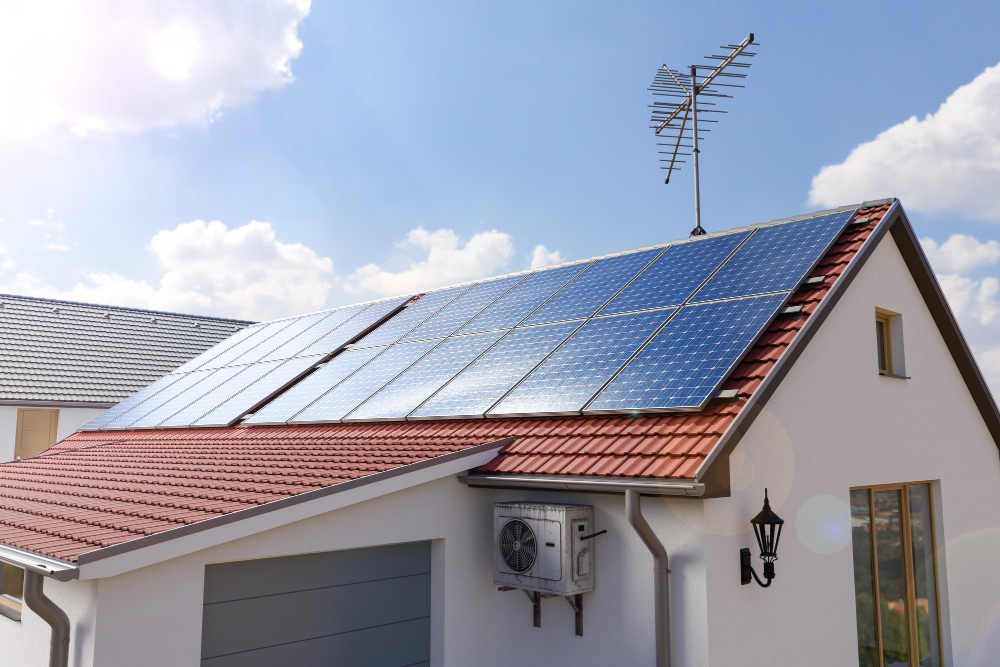In a world that is consuming energy faster than it can produce it in some areas, green energy is becoming more of a necessity than a priority. One such power source are solar panels that are designed to harvest the energy of the sun. What was once a power source that only the wealthy could afford, slowly is becoming standard for all homeowners. Of course, you need to have a roof and live in the part of the world that gets a lot of sunlight over the year, like California or Australia. Once you get to know the technology behind solar panels better, you will realize they are ideal for cutting the energy costs of your household.
A 100% free and renewable energy source
A solar panel might cost a pretty penny to install but once it is up there, you are tapping into a power source that will never die out. There are constant nuclear reactions at the surface of the sun which means it acts as an inexhaustible power source that we Earthlings receive free of charge. In fact, when our sun ceases to exist so will life on Earth perish. Until that happens some 4 billion years from now, we are granted a 100% free and renewable energy source that solar panels can harvest.
How does the system work?
You might be wondering how a solar panel converts the heat from the sun into electricity that is used to power the house. The answer is quite simple: the panels are made from photovoltaic cells that are basically semiconductors, much like silicon. Sunlight gets converted into electricity when it hits the cells and separates electrons from their atoms, thus flowing through the cell itself, generating electricity in the process. On average, modern solar panels have the potential to convert a third of the sunlight they get receive into electricity. As technology advances, this number is poised to rise.
Installation costs
The biggest issue that homeowners have with solar panels is the fairly high initial cost of installation. Although it has dropped more than 50 times after the technology was first introduced in the latter half of the 20th century, people are still reluctant to make the investment. However, there are government subsidies available in most countries that make the system affordable for most homeowners. A few panels on top of your roof will provide you not only with autonomy in terms of power but will actually start earning you money after a decade or so. An investment in solar energy is really an investment in the future.
Furthermore, the maintenance of the system is low. Apart from cleaning the panels, you need the assistance of maintenance staff only if something goes wrong. However, there is little to go wrong with a system that consists of panels, batteries, pipes, and a solar inverter that is highly reliable and doesn’t break often.
The downside…
Apart from high initial installation costs, another issue with solar panels is the fact that they don’t produce energy evenly. No matter how much sun your region gets yearly, there are going to be cloudy periods when the sun is blotted. During these times, solar panels are not producing energy but energy stored in lithium-ion batteries is being depleted instead. Since these are still expensive to produce on a massive industrial scale, this means your home storage capacity is limited. Until the batteries are upgraded or a new type of battery is developed, the energy storage issue will continue to plague solar panels.
…and the upside of solar panels
However, this apparent downside to solar panels does come with a twist. During the periods you do produce electricity, its excess is not wasted. The energy you cannot store you transfer back into the electrical grid. In most countries, this is recognized by the power company and you get various types of benefits for your household, such as a decreased energy bill. Ironically enough, since you cannot store energy, you become a producer of it, as your household acts as a mini-solar power plant.
Saving for the rainy day
We have mentioned that no energy is produced during a cloudy day. However, energy production is halted only during those days when there isn’t a single ray of sunshine. A partly cloudy sky still means that you will produce some energy, even if the panels are not directly exposed to sunlight. The only times that energy production stops for good is nighttime when not even the Moon shines brightly enough to charge the solar cells inside the panels. Before you decide to install solar panels onto your roof, you should check with the weather service how many sunny days your region gets and calculate how much energy those figures translate into.
Although solar panels come with a relatively high initial installation cost, their upsides outnumber the downsides. As a producer of electrical energy, you are no longer reliant on the power company, which means that your energy bills will go down. The best thing is, you’ll never run out of sunlight.








Comments 3